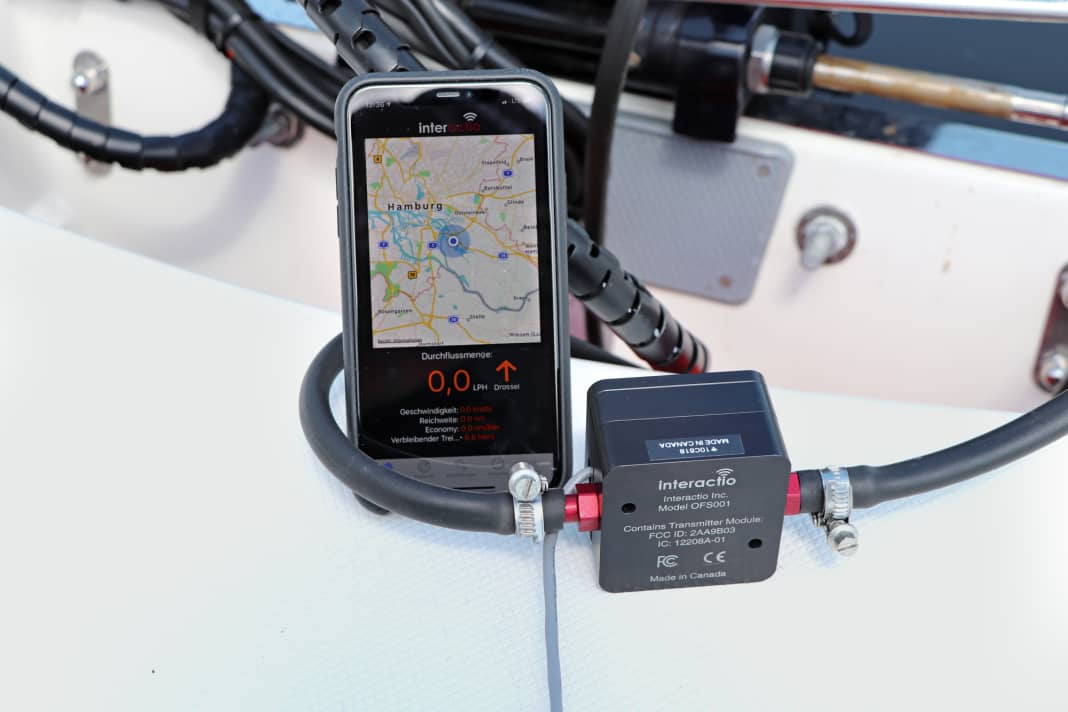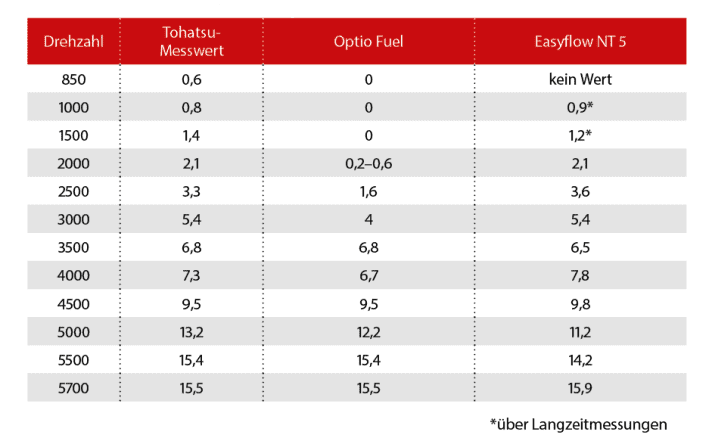





What has been standard in cars since the early 1990s can still only be found on newer boats: an on-board computer, also known as a "mouse cinema", which, surrounded by a speedometer, rev counter and warning lights, provides information on consumption and range. Modern engines often display this data via the engine electronics on the control panel or plotter. By displaying the exact fuel consumption, it is easier to find an economical driving style and save fuel. But what if the engine does not have such an interface?
Of course, the market offers some on-board measuring devices that can be integrated into the fuel line and measure the flow rate there. In most cases, these sensors require a little improvisation during installation, as hardly any measuring devices are plug-and-play capable. They are often modular solutions such as the Easyflow NT 5 from Bach-Messtechnik, which delivers accurate values in practical tests, but cannot necessarily be installed by a layman due to the very fine measuring lines. It also exudes the charm of a pocket calculator from the 1980s on the dashboard with its boxy housing. The measurement data from a retrofittable flow sensor from San Giorgio, on the other hand, can be elegantly displayed in your own rev counter. Other retrofittable sensors have an NMEA2000 connection and can be displayed on the plotter.
The Canadian manufacturer Interactio has a pleasing and innovative solution: the Optio Fuel Sensor (from approx. 300 euros, AWN) is a small black cube that is integrated into the fuel line and transmits the measurement data to the smartphone via Bluetooth (up to approx. 20 metres). The current consumption can then be monitored in the dedicated app. After entering the boat data and tank capacity, the device also provides GPS-linked information on possible ranges and tips on how to save fuel.
Installation of the consumption meters
It could hardly be simpler: find a suitable section of the fuel line between the filter and the engine, cut it, insert the sensor between the hoses and secure it with hose clamps. The device can then be screwed to the bulkhead. If the fuel line is made of metal, it may be necessary to cut out a larger piece and replace it with a hose.
Depending on the model, power is supplied either via an internal button cell or a 12-volt connection via the ignition of the engine panel. After bleeding the fuel line and installing the app, you can get started: search for the sensor in the app and connect it. If it is a diesel engine, a second sensor must be installed in the return line and registered in the app. During the journey, the smartphone then displays the current consumption and other interesting data.
In practice
The phone can be quickly paired with the sensor every time the engine is started. However, if the connection is interrupted for any reason, it can no longer be connected in our test unless the power supply is briefly disconnected (ignition off). Otherwise, the measured values in the test (Tohatsu 50 hp outboard motor) are very accurate, even if the system often needs a moment to calculate the values.

Due to the vapour bubble separator in the engine, the fuel pump does not continuously pump petrol through the line. It only pumps petrol irregularly because the engine draws from a reservoir and only refills when it needs to. The Optio-Fuel must therefore average the measured values. In any case, flow meters are only really accurate at higher speeds, i.e. above a certain flow rate, because at low speeds the fuel simply "seeps" through the gears of the sensor instead of causing them to rotate. According to the manufacturer, the Optio Fuel is suitable for flow rates above four litres, while the Bach system is suitable for flow rates above one litre.
If you want very precise consumption data even when driving slowly, there is no alternative to a modern engine that displays the data from the engine electronics on its control element.
That could also be interesting:
- Purchase of accessories: Online shops in comparison
- Equipment: Monitor state of charge via smart shunt

